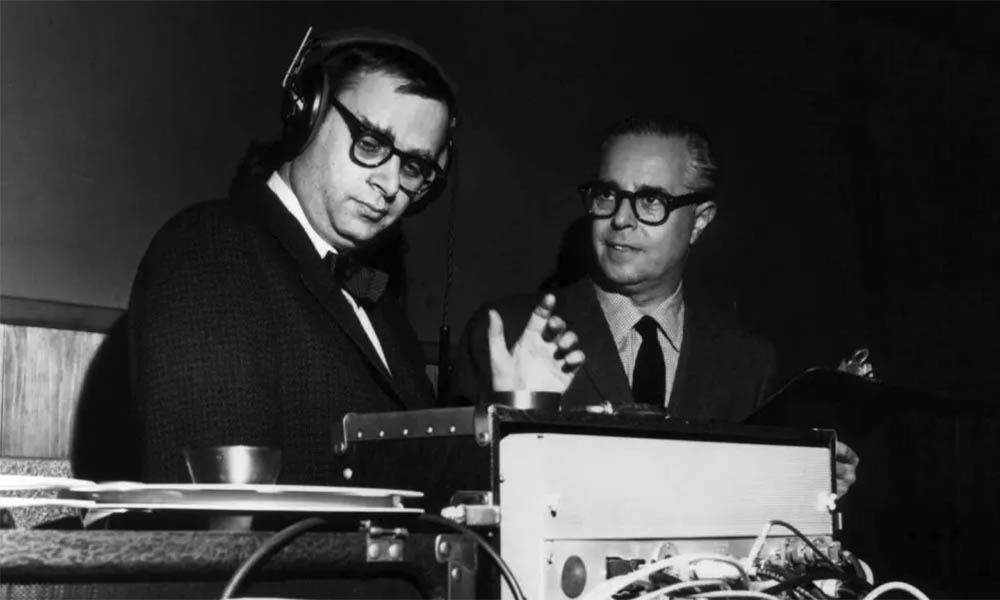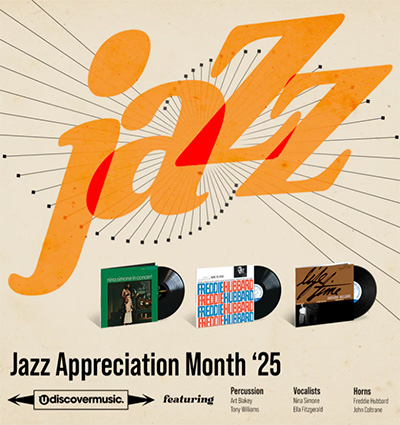Van Gelder Studio And The Blue Note Sound
Thanks to a forensic attention to detail, sound engineer Rudy Van Gelder’s studio was instrumental in creating the legendary Blue Note sound.

Blue Note’s founders, Alfred Lion and Francis Wolff, signed some of the most brilliant musical minds in modern jazz. From Thelonious Monk and Miles Davis to John Coltrane and Ornette Coleman, they recorded the music’s best and biggest names. But arguably, the most significant person they got to work for the company wasn’t a musician at all. He was, when they first encountered him, a part-time, self-taught sound engineer named Rudy Van Gelder. A professional optometrist by day, at night Van Gelder, also a jazz fan, recorded musicians in a studio he had set up in the living room of his parent’s home in New Jersey. It was in that house, located at 25 Prospect Avenue, Hackensack, that what we now know as the Blue Note sound was born.
Blue Note had been operating for 13 years when Alfred Lion met Van Gelder in 1952. Lion had been impressed by the audio quality of a session by saxophonist/composer Gil Mellé, recorded by the engineer at his Hackensack studio. Lion wanted to replicate the album’s sound at the label’s usual recording home, WOR studios in New York City, but was told by its resident engineer that it wasn’t possible and that he should contact the person who made the Mellé recording. And that’s how Blue Note found the man who would give them their classic sound.
Blue Note began recording exclusively at Hackensack from 1953 onwards, and the impeccable sound quality of their Van Gelder-engineered sessions – defined by clarity, depth, warmth, and sonic detail – didn’t escape the attention of other jazz labels. In fact, rival jazz indie Prestige, run by Bob Weinstock, also began hiring Van Gelder’s studio and services in an attempt to emulate the Blue Note sound. But this didn’t trouble Blue Note – rather, the improvement in audio quality benefitted jazz as a whole, and the label’s albums still sounded unique. That was a result of Alfred Lion being particular about what he liked. Evidently, as a producer he was more specific than Weinstock – he liked the music to swing, for one thing – and, consequently, was more organized. Lion had clearly focused goals in mind and paid the Blue Note musicians for several days’ rehearsal before the sessions. In contrast, Weinstock and Prestige just brought the musicians in cold to the studio to jam without much prior preparation. There was a gulf in quality that gave Blue Note an advantage.
A sense of sophistication
Recording techniques in the 50s were very different from what they are today. This was a time even before multi-track reels, when mono sound reproduction ruled and the equipment was quite primitive. Even so, Rudy Van Gelder brought a sense of sophistication to the Blue Note sound. From 1957, he began recording musicians directly to two-track tape while Blue Note began issuing stereo LPs alongside mono ones, before the former format took over in the 60s. But though recording a quartet on two tracks might seem a fairly easy and straightforward task in comparison to the layered multi-tracking and overdubbing that came in during the 70s, getting the right balance between the instruments was crucial and couldn’t be altered once the recording had taken place (there was no mixing that could be done after the fact). Rudy Van Gelder’s gift was for adjusting the sound balance while the musicians ran through a song prior to doing a take, so that by the time the red light came on, all of the musical parts fitted together perfectly and no one was louder than anyone else. Getting the sound balances just right was an art, and Van Gelder was a master at it.
By the late 50s, Rudy Van Gelder had become so busy (with dates for Blue Note, Prestige, Savoy, Riverside, and Pacific Jazz) that it was getting harder for him to juggle his work as an optometrist with recording sessions, so he began assigning different record labels different days of the week at his Hackensack studio (Fridays were assigned to Blue Note). Among the many Blue Note albums recorded at Hackensack are such classics as Horace Silver And The Jazz Messengers, Hank Mobley Quintet, Introducing Johnny Griffin, Sonny Clark’s Sonny’s Crib, John Coltrane’s Blue Train, Art Blakey And The Jazz Messengers’ Moanin’, Lou Donaldson’s Lou Takes Off and Cannonball Adderley’s Somethin’ Else.
Rudy Van Gelder builds a new studio
According to Rudy Van Gelder, Alfred Lion “held a belief that good things happen after dark, musically,” an allusion to the alchemy that jazz musicians could create in front of a live audience. But capturing that accurately had proved almost impossible – especially because of the acoustic problems that could occur – until Van Gelder found a way of doing it consistently well. Evidently, though, it was something of a chore for the engineer because it involved three days of preparation and necessitated him transporting all his vital studio equipment by car to the concert venue. Though it was a tough challenge to capture musicians on stage in front of an audience, groundbreaking Blue Note recordings such as Art Blakey’s A Night At Birdland and Sonny Rollins’ A Night At The Village Vanguard showed how Van Gelder helped to make the live album a valid and viable musical document in the jazz world while extending the Blue Note sound beyond the confines of his studio.
With his recording work booming, it wasn’t long before Rudy Van Gelder gave up practicing as an optometrist altogether. In 1959, inspired by the architecture of Frank Lloyd Wright and after visiting the converted Armenian church that Columbia used for their 30th Street studio in New York, he elected to build a new recording facility a few miles down the road from his Hackensack base, at 455 Sylvan Avenue in Englewood Cliffs, New Jersey. Van Gelder got one of Lloyd Wright’s protégés, David Henken, to construct a distinctive chapel-like main room for recording. Built from wood and masonry and boasting a high-domed ceiling as its pièce de résistance, Van Gelder Studio (as it was known) was both classic and futuristic: a state-of-the-art facility that ushered in a new age for the Blue Note sound.
The studio’s high ceiling gave a sumptuous natural reverb to Van Gelder’s recordings (though, apparently, Alfred Lion preferred a drier sound) and, from 1959 right through to the 70s (by which time Lion and Wolff had left the label), Blue Note continued to record at Englewood Cliffs. So did other labels – namely Impulse! (Van Gelder engineered Coltrane’s masterpiece for the label, A Love Supreme, there), Verve, and, in the 70s, CTI.
Rudy Van Gelder’s fastidiousness in the studio
One of the reasons the Blue Note sound was so distinctive was thanks to Rudy Van Gelder’s fastidiousness in the studio. He was a boffin-like genius who brought a scientific mindset and forensic attention to detail to the art of audio recording. He was also extremely protective of his techniques and was known to use tape to conceal the manufacturers’ names on his equipment. Musicians who questioned him about his methods got short shrift, and touching his equipment was not permitted. Only Van Gelder himself was allowed to move microphones, which he did wearing a pair of garden gloves. Some musicians have described him as eccentric – but as idiosyncratic as his behavior and some of his methods were, Van Gelder certainly got results and made an indelible mark on both jazz and Blue Note’s history.
Rudy Van Gelder’s rationale behind his quest for sonic perfection was simple: “I tried to make these individual people be heard in a way they wanted to be heard,” he told Blue Note producer and historian Michael Cuscuna in 2004 for a short film released on the DVD portion of a Blue Note retrospective called Perfect Takes. Just as designer Reid Miles had been for Blue Note’s artwork, Van Gelder was a crucial part of Blue Note’s creative team. He brought Alfred Lion’s sonic vision to life and was able to present the label’s musicians in the best possible light.
In his later life, between the years 1999 and 2008, the veteran engineer used his expertise to supervise the remastering of a great many classic Blue Note albums that he had originally recorded. They were released on CD in a series called RVG Editions, which helped Blue Note to find a new, younger audience but also reaffirmed how indispensable Van Gelder was to the Blue Note sound.
It’s not an exaggeration to say that, if it wasn’t for Van Gelder’s genius at capturing sound and his accuracy in recording musical instruments, it’s doubtful whether Blue Note as we know it would even exist. Rudy Van Gelder was instrumental in not only giving the label a unique sonic identity but also, perhaps more importantly, changed the way jazz was recorded. He was a true pioneer whose musical legacy is intertwined with Blue Note’s history.
Listen to the best of Blue note on Apple Music and Spotify.















Mac
January 27, 2020 at 7:02 pm
I love Rudy. But there are those out there with credentials,who have different views on his work especially with the RVGs that were remastered. Early BlueNote CDs:”The classic BlueNote albums span the mid ’50s to late ’60s were recorded directly to two-track analog tape.No multitrack recording was used and consequently no mixing was required.Therefore,this CD was made by transferring the one step analog master to digital.” Simple. But the remasters complicated things,some times for the worse. Why? Why? Why?